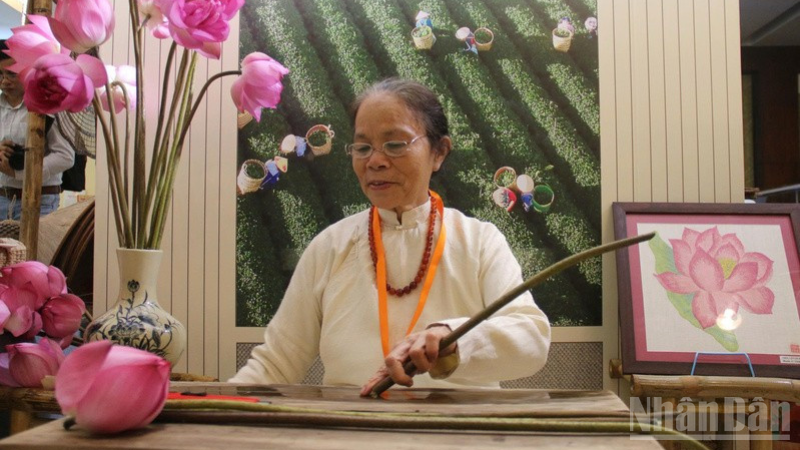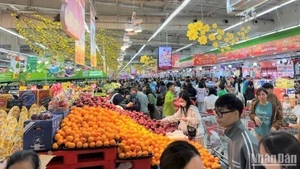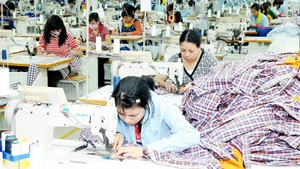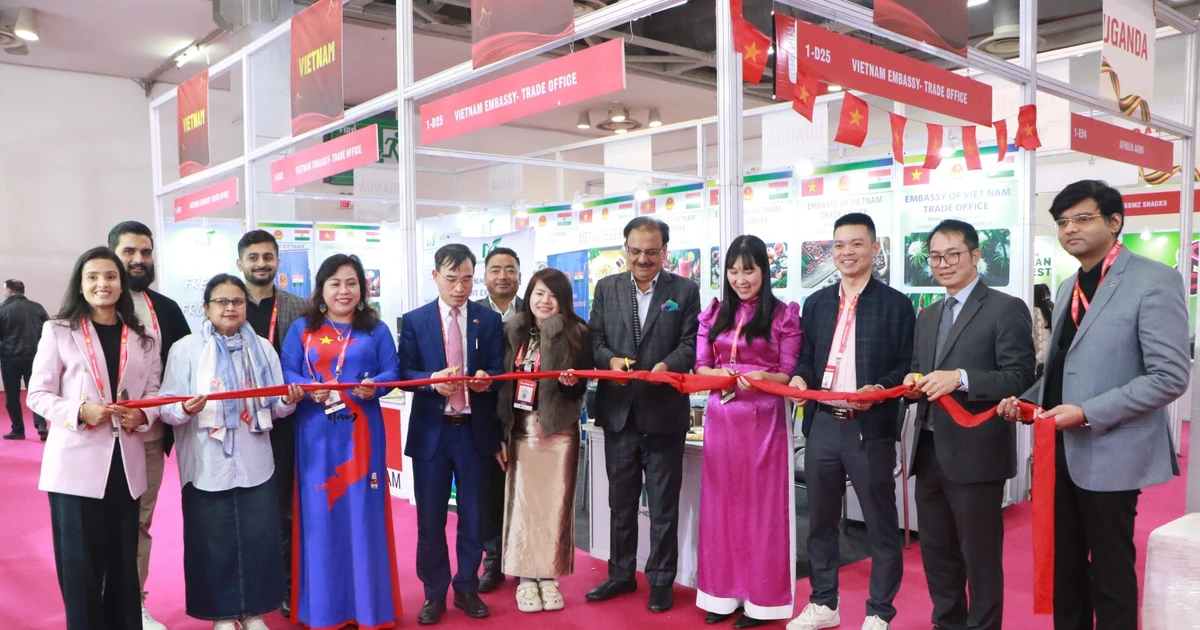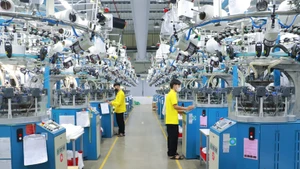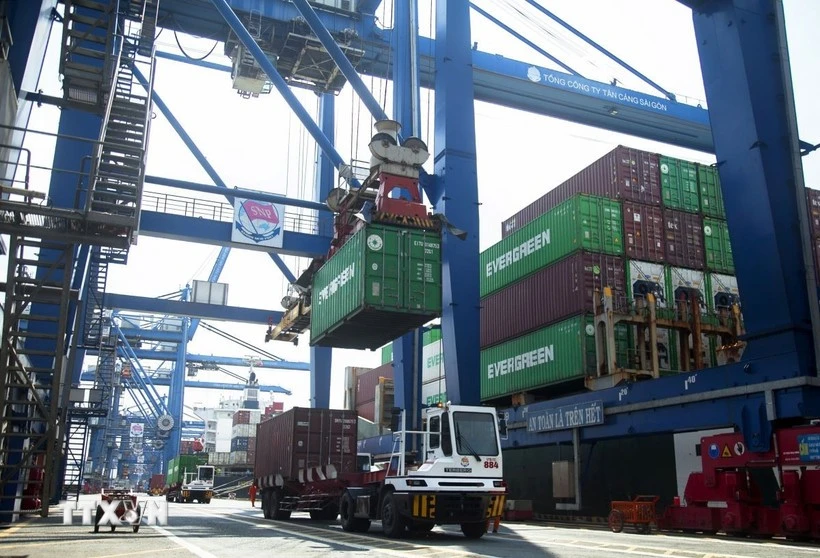Each year, craft villages bring in revenue of more than 24 trillion VND, the average income of workers reaches more than 7 million VND/person/month.
When craft villages breathe life into new rural areas
In recent years, Bat Trang commune has promoted the strength of traditional pottery villages, gradually developing into a shopping experience tourist destination, contributing to boosting the economy and promoting local brands.
According to the leaders of Bat Trang commune, Bat Trang’s main income comes from ceramic production and trading with an estimated annual production and trade value of more than 2 trillion VND.
Every day, the craft village welcomes from 3,000 to 5,000 workers from other localities to work with an average income of 7 to 8 million VND/month. In particular, artisans who have been in charge of the manufacturing process for more than 20 years can earn up to 50 million VND/person/month.
Not only focusing on increasing income for people, traditional craft villages also focus on product promotion activities to spread the value of goods. In the embroidery craft village of Hong Son commune, Ha Noi, the promotion of traditional silk weaving is promoted to a large number of people at home and abroad.
Artisan Phan Thi Thuan shared: “What I care about most is not only making beautiful silk, but also preserving the soul of the hometown weaving profession, so that the younger generation can have jobs right on this land. When people have a stable income from the profession, the craft village will be truly sustainable and the lives of rural people will improve and be happier.”
Born into a family with 4 generations of weaving, with the love of silkworm rearing and weaving, artisan Thuan has woven unique silks. That creativity not only brings a distinct mark to Phung Xa silk, but also contributes to bringing Vietnamese silk to demanding markets around the world.
Thanks to that, many workers in the commune have more stable jobs, and their income has gradually increased. Thuan’s success has strongly inspired local people to continue to stick with the traditional profession.
Not only is it a place to preserve the quintessence of traditional culture, many old craft villages of Ha Noi such as Bat Trang pottery, Phung Xa silk, Van Phuc, Kieu Ky gold-plated, Phu Vinh rattan and bamboo weaving or Ha Thai lacquerware... have also had their own ways to promote their strengths, becoming attractive shopping and experience destinations for domestic and foreign tourists thanks to the creativity and skillful hands of artisans.
Preserving and developing craft villages
According to the Ha Noi City New Rural Area Coordination Office, in recent times, the agency has consulted on many plans to preserve and develop craft villages. Party committees and local authorities also consider this as the way for the capital’s craft villages to promote their potential and affirm their brands in the domestic and international markets.
Therefore, in economic and social development policies, the city always attaches importance to developing the craft village economy. Identifying the craft village economy as not only an economic task but also a responsibility to preserve traditional cultural values, creating momentum in building new rural areas.
From the practice of developing the craft village economy, the city has made a list of 175 traditional craft heritages that need to be preserved and maintained. Of which, 8 traditional crafts are included in the list of national intangible cultural heritages, 20 traditional crafts are on the list of priority protection of Ha Noi until 2025. The city has recognised 7 tourist destinations associated with craft villages.
Phung Phuong Oanh, an employee at Bao Quang Limited Liability Company in Bat Trang commune, said that each ceramic product produced at the workshop not only brings income, but also contains pride in continuing the traditional craft.
Here, young workers are enthusiastically instructed by artisans, thanks to which the ceramic profession always has a successor generation, without worrying about it being lost. Thanks to that, the craft village has developed, the income of the people has been increasingly improved, the village roads and alleys are also more spacious and clean than before.
According to the leaders of Bat Trang commune, the average income per capita of working age has reached 90 million VND/person/year, so the people are very excited and determined to stick with the profession.
The success of traditional craft villages is an important foundation for Ha Noi to continue to affirm its position as the largest craft village centre in the country, while realising the goal of building a new countryside.
In the coming time, the city will persistently accompany artisans, skilled workers and economic entities, turning craft villages not only into places to preserve cultural quintessence, but also as a driving force for sustainable economic development, contributing to building the capital increasingly rich, civilised and modern.
In the coming time, the city will persistently accompany artisans, skilled workers and economic entities, turning craft villages into not only places to preserve cultural quintessence, but also a driving force for sustainable economic development, contributing to building the capital city to be increasingly rich, civilised and modern.
In addition, the city will plan the development of craft villages; in which, developing crafts associated with villages to restore, preserve, develop craft villages associated with tourism, experiential education to create multi-values; craft villages that cause pollution or are at risk of causing environmental pollution will be planned into industrial zones, clusters, points, and concentrated production areas to expand production and ensure environmental hygiene; at the same time, continue to effectively implement mechanisms and policies from the Central and the city.
According to the leaders of Ha Noi, the city has issued documents on preserving and developing craft villages; Review, develop and perfect incentive policy mechanisms to gradually resolve difficulties and bottlenecks in developing craft villages, thereby creating favourable conditions to increase the value of handicraft products and craft villages.
Solve the problem of linking raw material areas that are still difficult in Ha Noi, aiming to connect raw material areas to ensure a stable, quality and sustainable supply, towards the goal of increasing handicraft exports; complete infrastructure associated with tourism development; accelerate the construction of industrial clusters for polluting craft villages. At the same time, the long-term goal is to diversify products and design new models; build brands, collective labels, and identity for craft villages.
Also in the strategy of developing the craft village economy, creating a strong internal resource in building new rural areas, the city strives to have at least two more craft villages in Ha Noi join the network of “World Craft Creative Cities” by the end of 2025.
To achieve the above goals, Ha Noi will strengthen domestic and international trade promotion activities, regularly organise competitions, fairs, and festivals on craft village products, and participate in domestic and international events to introduce and promote handicraft products and craft villages to domestic and foreign consumers.
With synchronous solutions and development plans, it is believed that the goal of developing craft village economy and creating a lever for building new rural areas in the capital will soon be reached.
